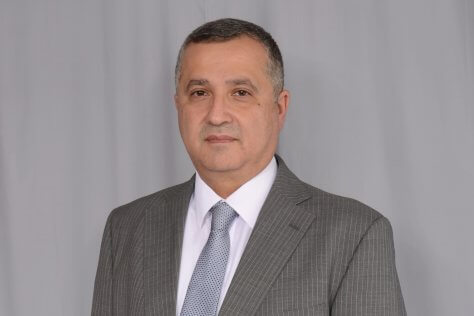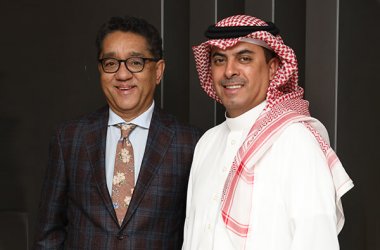TahawulTech.com interviewed Nabil Khalil, Executive Vice President at R&M Middle East, Turkey and Africa, who highlighted the firm’s emphasis on ensuring fiber connectivity right to the edge of the network to respond to the consumer’s increasing demand for bandwidth.

What is the biggest change you have seen in the cabling market due to other industries striving for digital transformation?
The world is moving to the cloud model to achieve better agility and economy, following the lead of the cloud titans who have redefined the economics of application delivery during the last decade. Applications such as social media and big data, new architectures such as dense server virtualisation and IP Storage, and the imperative of mobile access to all applications have placed enormous demands on the network infrastructure in data centres.
Network architectures that make the cloud possible are fundamentally different from the highly over-subscribed, hierarchical, and costly legacy solutions of the past. Increased adoption of high-performance servers and applications requiring higher bandwidth is driving adoption of 10 and 25 Gigabit Ethernet switching in combination with 40 and 100 Gigabit Ethernet. As a result, it has become increasingly necessary to include network fabrics, software-defined networking, hyper convergence, and software defined storage technologies in the data centre. The introduction of Virtual Storage Area Networks (VSAN) and Software-Defined Storage (SDS) is significantly changing network architectures in the Enterprise Data Center. Shifting storage into the server housing means networks are consolidated. Cabling density increases as a result, both on the server housing and on the switch or router. Increasing virtualisation means data traffic between servers grows. At the same time, there is a further increase in CPU and PCI performance. As a result, data centres have to ensure their networks can cope with using 40 and 100 Gigabit Ethernet (GbE).
From a cabling standpoint, all this adds complexity and modernisation of the data centre promotes the need for simplicity, reliability and high-density. There are several areas to focus on to address these cabling needs, including hyperscale solutions, the choice between fiber and copper, density and modularity, and automation.
How have government regulations and policies in the Middle East regions impacted the cabling market?
In many countries in the region, governments have laid clear strategies for the digital advancement of their nations. Today, the UAE ranks as the global leader in FTTH penetration, according to the leading industry body FTTH Council. In Saudi Arabia, in line with the Ministry of Communication and Information Technology’s (MCIT) National Transformation program 2020 initiative for the ICT sector, telecom operators are rapidly rolling out fiber optic connectivity not just in the dense urban areas, but also across remote locations in the Kingdom.
As a result, consumer demands for bandwidth are increasing and investments that ensure fiber connectivity right to the edge of the network are proving essential to providing the capacity that new applications and volumes of traffic demand. At R&M, we see a wide-scale increase in fiber optic cabling and the installation of decentral micro data centres as being part and parcel of the necessary infrastructure for future-ready networks.
What is the impact of the increasing number of data centres in the UAE on the cabling industry?
This of course has a positive impact on the cabling industry as most organisations today understand that while the cost of cabling typically only accounts for 4-5% of the total expense of the data centre, reports have shown that 65% of system outages are related to cabling and patching mistakes cause of 28% of downtime in data centres. They are therefore making sound cabling investments to significantly reduce the possibility of data centre downtime.
It is worth noting that internal data centre traffic is expected to grow by 80% over the next three years. Because of this, there is a real risk of networks becoming bandwidth bottlenecks. As a standard practice, organisations must now move away from traditional low-density cabling to high-density structured cable solutions. By doing so, they can implement physical network infrastructure in a far more manageable and flexible manner. Furthermore, these systems enable data centres to easily migrate to 25, 100 and 200 Gb/s networks and solve some of the most critical network challenges.
As the topic of data centre modernisation is expansive, R&M has provided its unmatched expertise on data centre planning, design and implementation to organisations in our comprehensive data centre Handbook, the latest edition of which is available for free download from our website.
Can you highlight any major regional customers you have onboarded over the last 12 months? How are they using your technologies and services to grow their business?
The cabling that R&M provided for the New Istanbul Airport connects thousands of cameras, card readers and the data centre with 90,000 connections installed in the first section of the airport. The cabling also connects 5,000 Wi-Fi access points, giving the airport a full-coverage WLAN, as well as the ICT infrastructures for customs, the security staff and the police force.
In the first phase of construction, R&M supplied 5,400 km of copper cablings and 3,270 km of fiber-optic cabling. Installation also required fiber-optic distribution cabinets, patch panels as well as 115,000 connector ports. Special requirements also needed to be fulfilled in each area, such as a color-coding system.
R&M outfitted the airport’s data centre with the Netscale solutions, which is the fiber-optic management platform with the world’s highest connection density of up to 120 ports per rack unit in a 19’’ rack. The R&MinteliPhy digital management and monitoring system was also installed. This system automates the monitoring and operation of the data network from a central location and can detect any unsolicited changes to the infrastructure or attempts to tamper with the connectors in real time.
The cabling is designed for a lifetime of 25 years and unconditional reliability, and R&M has provided a guarantee for this. The airport wants to provide travelers, logistics companies and airlines with a guarantee of 99.982% reliability (TIER III class).
What are the most exciting technological developments to have affected the Middle East in the last 12 months?
The growth in private and business data traffic in the Middle East continues unabated. And the Internet of Things, 5G and mobility also need to be taken into consideration. They are causing additional exponential growth of IP traffic and require ultra-low latency even in remote places. We don’t expect the hyperscale data centres that are coming into existence today to be able to fully cover network, computing and storage requirements in a few years.
At R&M, we see a wide-scale increase in FO cabling and the installation of decentral micro data centres as being part and parcel of the necessary infrastructure. These micro data centres are autonomous, automatable and sturdy solutions which have to be powerful enough to assume a leading role in the cloud. Lots of companies could replace older enterprise data centres with powerful edge data centres. They can be used for a range of functions – for private and hybrid cloud, as a resource for external users.





